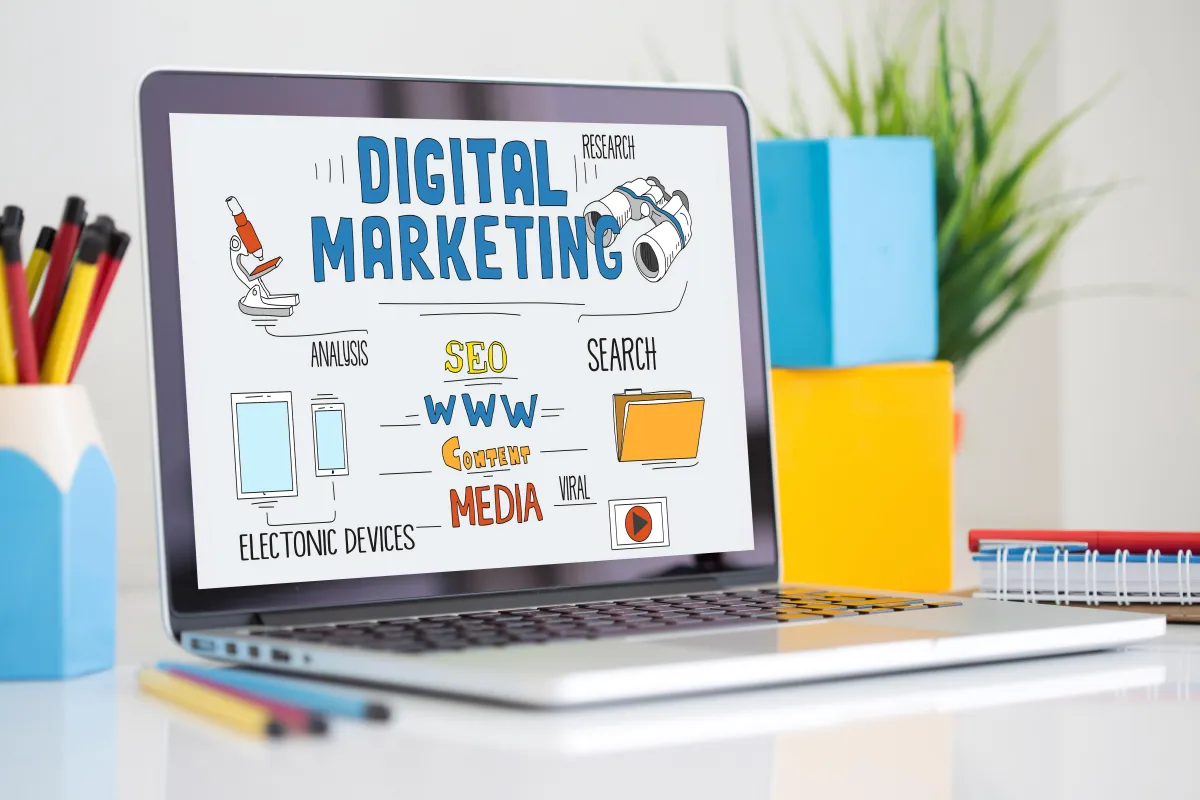
The Ultimate Guide to Digital Marketing: Boost Your Online Presence and Drive Results
Digital marketing uses online tools to promote your business. It involves reaching customers through digital channels like search engines, social media, email, and websites.
Digital marketing aims to attract, engage, and convert potential customers.
There are two main forms of digital marketing:
Business-to-Business (B2B): This form targets other businesses. The content and strategies focus on providing value and solutions that meet the needs of other companies.
Business-to-Consumer (B2C): This form targets individual consumers. The content and strategies aim to engage and convert individual customers by appealing to their emotions and personal interests.
Types of Digital Marketing
1. Search Engine Optimization (SEO)
SEO involves optimizing your website and content to rank higher in search engine results pages (SERPs) organically.
By targeting relevant keywords, improving site structure, and enhancing user experience, businesses can attract more organic traffic and increase visibility online.
2. Content Marketing
Content marketing focuses on creating and distributing valuable, relevant, and consistent content to attract and retain a clearly defined audience.
This can include blog posts, articles, videos, infographics, and more, designed to educate, entertain, or inform the target audience while subtly promoting products or services.
3. Social Media Marketing
Social media marketing utilizes social media platforms (such as Facebook, Instagram, Twitter, LinkedIn, etc.) to connect with audiences, build brand awareness, drive website traffic, and generate leads.
Effective social media strategies involve engaging with followers, sharing content, running ads, and leveraging analytics to optimize performance.
4. Pay-Per-Click Advertising (PPC)
PPC advertising involves paying for ads to appear on search engines or social media platforms. Advertisers bid on keywords, and they pay a small fee each time a user clicks on their ad.
PPC campaigns can be highly targeted, allowing businesses to reach specific demographics and measure ROI with precision.
5. Email Marketing
Email marketing involves sending targeted messages to prospects and customers via email. This can include newsletters, promotional offers, product updates, and personalized recommendations.
Email marketing is known for its high ROI and effectiveness in nurturing leads and maintaining customer relationships.
6. Digital Analytics and Reporting
Digital marketing relies heavily on data-driven insights to measure performance, track customer behavior, and optimize strategies.
Tools like Google Analytics provide valuable metrics such as website traffic, conversion rates, and user engagement, allowing marketers to make informed decisions and continually improve campaign effectiveness.
Why Digital Marketing Matters
Reach and Accessibility
Digital marketing allows businesses to reach a global audience instantly, breaking down geographical barriers and expanding market reach.
Targeted Advertising
Unlike traditional methods, digital marketing enables precise targeting based on demographics, interests, behaviors, and other criteria, ensuring messages reach the right audience at the right time.
Cost-Effectiveness
Digital marketing often requires lower investment compared to traditional advertising, making it accessible to businesses of all sizes, including startups and small enterprises.
Measurable Results
With digital marketing, every aspect of a campaign—from ad impressions to website conversions—can be tracked and analyzed in real-time, providing clear insights into ROI and campaign effectiveness.
Adaptability and Flexibility
Digital marketing strategies can be quickly adjusted and optimized based on performance data, market trends, and customer feedback, allowing businesses to stay agile and responsive in a fast-paced digital landscape.
How to Do Digital Marketing
Define Goals
Set clear goals aligned with your business objectives. Understand what you want to achieve with your digital marketing efforts.
Understand Your Audience
Develop buyer personas to understand your target audience. Know their demographics, interests, and online behavior.
Choose the Right Channels
Select digital marketing channels based on audience preferences and industry trends. Focus on the platforms where your audience is most active.
Create Compelling Content
Produce content that resonates with your audience and supports your goals. Use blog posts, videos, infographics, and social media updates to engage your audience.
Monitor and Analyze
Continuously monitor your campaigns and use data to optimize your strategies. Track key metrics like website traffic, conversion rates, and engagement levels to measure success and make informed decisions.
Conclusion
By understanding digital marketing and its key components, you can effectively promote your business online.
Start implementing these strategies today to reach more customers and drive growth.
Stay tuned for more tips and insights on how to excel in digital marketing.

Copyright 2026 | Prospecting
Tel: (877) 721-2597
Email: [email protected]
Cookie Policy
Terms of Use
Disclaimer

